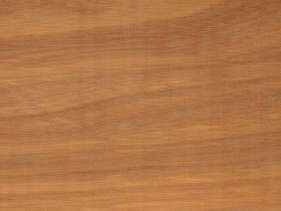Scientific Name
Ulmus crassifolia
Trade Name
Cedar elm
Family Name

Common Names
Basket elm, Cedar elm, Elm, Olmo, Red elm, Rock elm, Southern rock elm
Regions of Distribution
North America
Countries of Distribution [VIEW MAP]
United States
Common Uses
Baskets, Boxes and crates, Building materials, Casks, Cooperages, Decorative plywood, Decorative veneer, Farm vehicles, Figured veneer, Food containers, Interior construction, Interior trim, Machinery parts, Millwork, Moldings, Packing cases, Pallets, Plywood, Skids, Trimming, Vehicle parts, Veneer, Wainscotting, Wheels
Environmental Profile
| Endangered | ||||||||||||
| Extinct | ||||||||||||
| Abundant/Secure | ||||||||||||
| Status has not been officially assessed |
Distribution Overview
The growth range of Cedar elm extends from extreme southwestern Tennessee, south to Mississippi, west to southern Texas and extreme northeastern Mexico, and north to southern Oklahoma. It is also reported to occur locally in northern Florida. The tree is often found growing with other hardwoods at elevations of up to 1500 feet (457 m), and prefers moist soils along streams as well as upland limestone hills.
Heartwood Color
| Brown | ||||||||||||
| Black | ||||||||||||
| Light brown | ||||||||||||
| Golden brown with a reddish cast | ||||||||||||
| Brown |
Sapwood Color
| White | ||||||||||||
| Yellow | ||||||||||||
| Brown | ||||||||||||
| Green/Grey | ||||||||||||
| Light brown | ||||||||||||
| Brown |
Grain
| Even | ||||||||||||
| Interlocked | ||||||||||||
| Straight |
| Straight | ||||||||||||
| Interlocked |
Texture
| Fine | ||||||||||||
| Medium |
Luster
| Low |
Natural Durability
| Durable | ||||||||||||
| Very durable |
Odor
| No specific smell or taste |
Drying Defects
| Checking | ||||||||||||
| Splitting |
Ease of Drying
| Rapidly | ||||||||||||
| Fairly Easy | ||||||||||||
| Reconditioning Treatement |
Kiln Drying Rate
| Naturally dries quickly |
Tree Size
| Tree height is 50-60 m | ||||||||||||
| Tree height is 40-50 m | ||||||||||||
| Sapwood width is 0-5 cm | ||||||||||||
| Trunk diameter is 100-150 cm |
Blunting Effect
| Moderate |
Boring
| Fair to good results | ||||||||||||
| Poor to very poor results | ||||||||||||
| Fairly difficult to very difficult | ||||||||||||
| Fairly easy to very easy |
Carving
| Fairly Difficult to Very Difficult |
Cutting Resistance
| Moderate to saw | ||||||||||||
| Fairly Difficult to Very Difficult to saw | ||||||||||||
| Easy to saw |
Mortising
| Fairly Difficult to Very Difficult |
Moulding
| Fairly Difficult to Very Difficult |
Planing
| Fair to Good Results | ||||||||||||
| Fairly Easy to Very Easy |
Resistance to Impregnation
| Resistant heartwood | ||||||||||||
| Resistant sapwood |
Response to Hand Tools
| Easy to Work | ||||||||||||
| Fairly Difficult to Difficult to Work |
Routing & Recessing
| Fairly Difficult to Very Difficult |
Turning
| Fairly Difficult to Very Difficult |
Numerical Data
| Item | Green | Dry | English |
| Specific Gravity | 0.49 | 0.62 | |
| Radial Shrinkage | 5 | % | |
| Tangential Shrinkage | 10 | % | |
| Volumetric Shrinkage | 15 | % | |
| Item | Green | Dry | Metric |
| Specific Gravity | 0.49 | 0.62 | |
| Radial Shrinkage | 5 | % | |
| Tangential Shrinkage | 10 | % |
References
Little, E.L. 1980. The Audubon Society Field Guide to North American Trees – Eastern Region. Published by Arthur A. Knopf, New York.
Panshin, A.J. and C. deZeeuw. 1980. Textbook of Wood Technology, 4th Edition. McGraw-Hill Series in Forest Resources. McGraw-Hill Book Company, New York.
USDA. 1987. Wood Handbook:Wood as an Engineering Material. Agriculture Handbook No. 72. United States Department of Agriculture, Forest Service, Madison, Wisconsin.